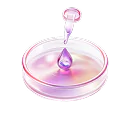If one is infertile one needs to get him or herself checked by a doctor. One’s health history, medications, sexual history, as well as sexual habits are taken into consideration.
Men will indeed get a physical exam and often a sperm analysis, which does test the health of one’s sperm.
How does one know one is infertile?
In the case of women, testing does begin with a medical history and physical exam, which does include a pelvic examination. The doctor then does make sure that she does ovulate regularly and that her ovaries are indeed releasing the eggs. Blood tests are indeed taken to measure hormone levels. The ovaries, as well as the uterus, can be examined by ultrasound, and a specific X-ray test can be made use of to check the uterus and fallopian tubes.
In about 80% of couples, the cause of infertility is indeed either an ovulation problem, blockage of the fallopian tubes, or a sperm problem. In 5%-15% of couples, all tests are rather normal, and the cause is not really known.
What sort of treatments are there for infertility?
Infertility in men is treated with:
- Surgery, if the cause is a varicocele (widening of the veins in the scrotum) or a blockage in the vas deferens, tubes that do carry sperm.
- Antibiotics are meant to treat infections in the reproductive organs.
- Medications and counseling to treat problems with erections or ejaculation.
- Hormone treatments are made use of in case the problem is due to a low or high level of certain hormones.
In women infertility is treated with:
- Fertility drugs and hormones to help the woman ovulate or restore levels of hormones
- Surgery is made used to remove tissue that is rather blocking fertility (such as endometriosis) or even to open blocked fallopian tubes
Infertility in men, as well as women, can also be treated with the help of assisted reproductive technology, or ART.
There are several types of ART:
IUI (intrauterine insemination): In this case, sperm is rather collected and then placed directly inside the woman’s uterus while she is actually ovulating.
IVF (in vitro fertilization): The sperm and egg are of course collected and brought together in a lab. The fertilized egg then grows for 3 to 5 days. Then the embryo is placed in the woman’s uterus.
GIFT (gamete intrafallopian transfer) and ZIFT (zygote intrafallopian transfer): The sperm, as well as the egg, are collected, brought together in a lab, and then quickly placed in a fallopian tube. With the GIFT, the sperm and eggs are placed into the fallopian tube. With ZIFT, a fertilized egg is placed into the tube at 24 hours.
Options of Fertility treatment for women
1. In Vitro Fertilization is indeed quite popular and is very useful in treating fertility problems.
2. Artificial Insemination is another form of fertility treatment that quite a few opt for.
3. Using an Egg Donor is nowadays an increasingly common procedure and has a much success rate.
4. Surrogate Mothers are made use of.
5. Checking for Blocked Fallopian Tubes Blocked tubes are also done and one’s doctor will diagnose it with a test known as a hysterical pingogram.
6. Tubal Ligation Reversal is a form of surgery to reopen, untie, or reconnect a woman’s fallopian tubes so she can become pregnant.
7. Tubal cannulation is, of course, a procedure to help clear a blockage in the fallopian tubes.
8. Other Fallopian Tube Procedures options are surgical in nature.





























